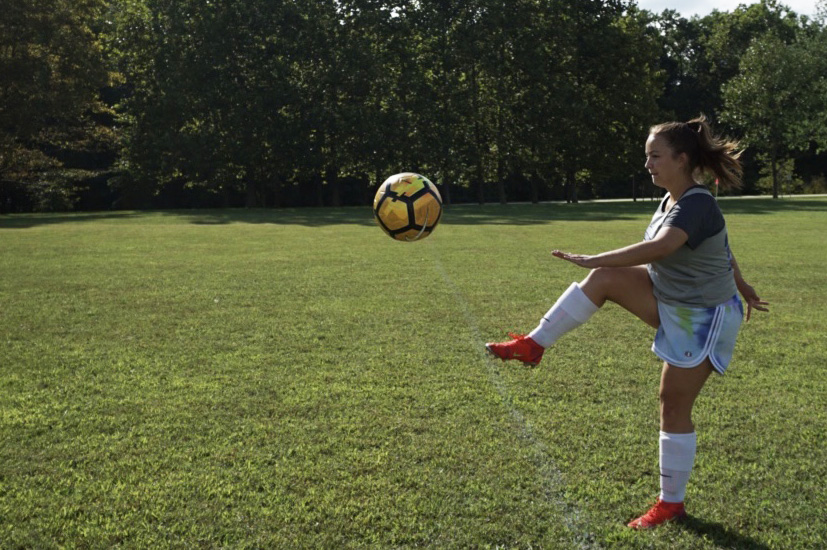Field at Siegert Stadium gets new turf
Women’s soccer defense/midfield player Sydney Klabnik practices on a grassy field near the baseball diamond while the college replaces the turf at Siegert Stadium.
September 22, 2021
AACC is replacing the turf on the field at Siegert Stadium, moving soccer practices and lacrosse fall ball to a grassy field near the baseball diamond for five weeks.
According to Athletic Director Duane Herr, the college is replacing the synthetic turf for the first time since 2010, when it built Siegert Field. Herr said the original turf was in bad shape.
“The synthetic turf began to shear or break off entirely, creating a lot of loose material on top of the field,” Herr said.
“The turf was on its last leg,” men’s soccer coach Nick Cosentino said. “It was worn out.”
The college chose AstroTurf RootZone 3D3 and will spend $634,000 on the replacement.
The men’s and women’s soccer teams will not host any home games until the project is finished.
Herr said the teams had already scheduled most of their home games for October before the replacement started. “We didn’t have to shift much,” he said, but added, “That could change if the project is delayed at all.”
One change is the location of team practices.
Soccer centerback/forward Silas Baker said practicing on the grass field instead of on turf has been rough but can’t wait play the first game on the new turf.
Still, he said, “I wish the project would have started sooner,” said Baker, graduating this fall, said Baker, a homeland security management student. But he noted that he and his teammates “are all very happy about having a new turf.”
According to Maury Chaput, AACC’s executive director of administrative services, the college waited until this semester to replace the turf because that is when it had the funds to pay for it.
Lacrosse midfielder Thomas Williams, whose team has been practicing on the grassy field for pre-season training, said he is used to playing on grass because he practices in his backyard at home.
Plus, said the first-year psychology student, “They take really good care of the grass out here.”
Coaches also said they are looking forward to playing on brand-new turf.
“A new turf has fresh rubber in it, and it’s probably a little thicker, a little cushier” than the old material, Cosentino said.
That could mean fewer athlete injuries, men’s lacrosse coach Joseph Stanilaus said.
“Having a newer surface is a lot safer for the student athletes with [avoiding] concussions and things of that nature,” Stanilaus said.
Cosentino agreed.
“The way the turf was before … they removed it, it was worn out to the point where you were open to injuries,” he said.
Still, Herr said the college has maintained the turf well over the years. Some schools have to replace their turf every eight years, he said.
Cosentino pointed out that the new turf will show lines for soccer and lacrosse, but not football or field hockey, which the old field included.
“If you look at turf fields across the county, in the stadium, most of them are football,” he said. “They’ll have football lines and field hockey lines and lacrosse lines and soccer lines. This turf is going to be unique … which is pretty cool.”












